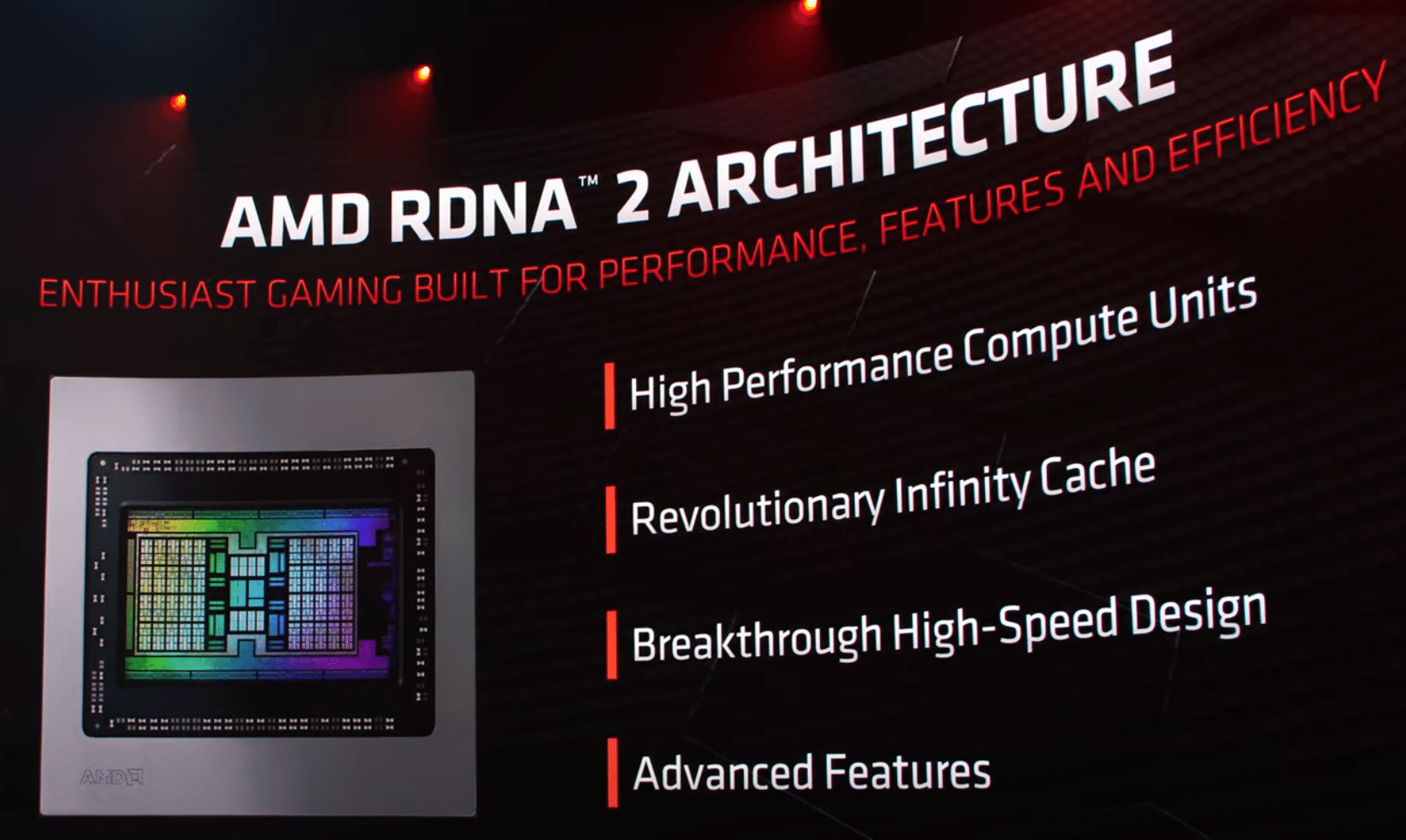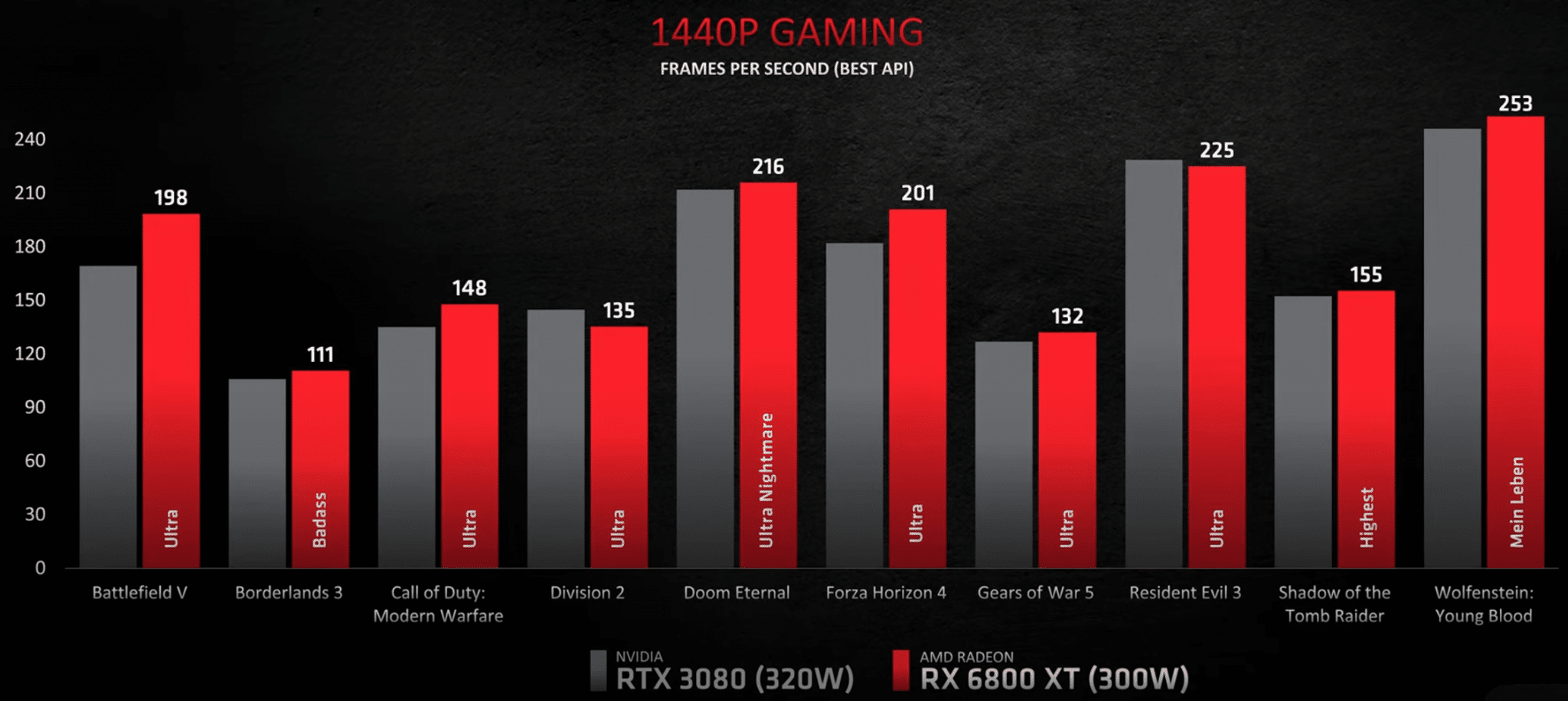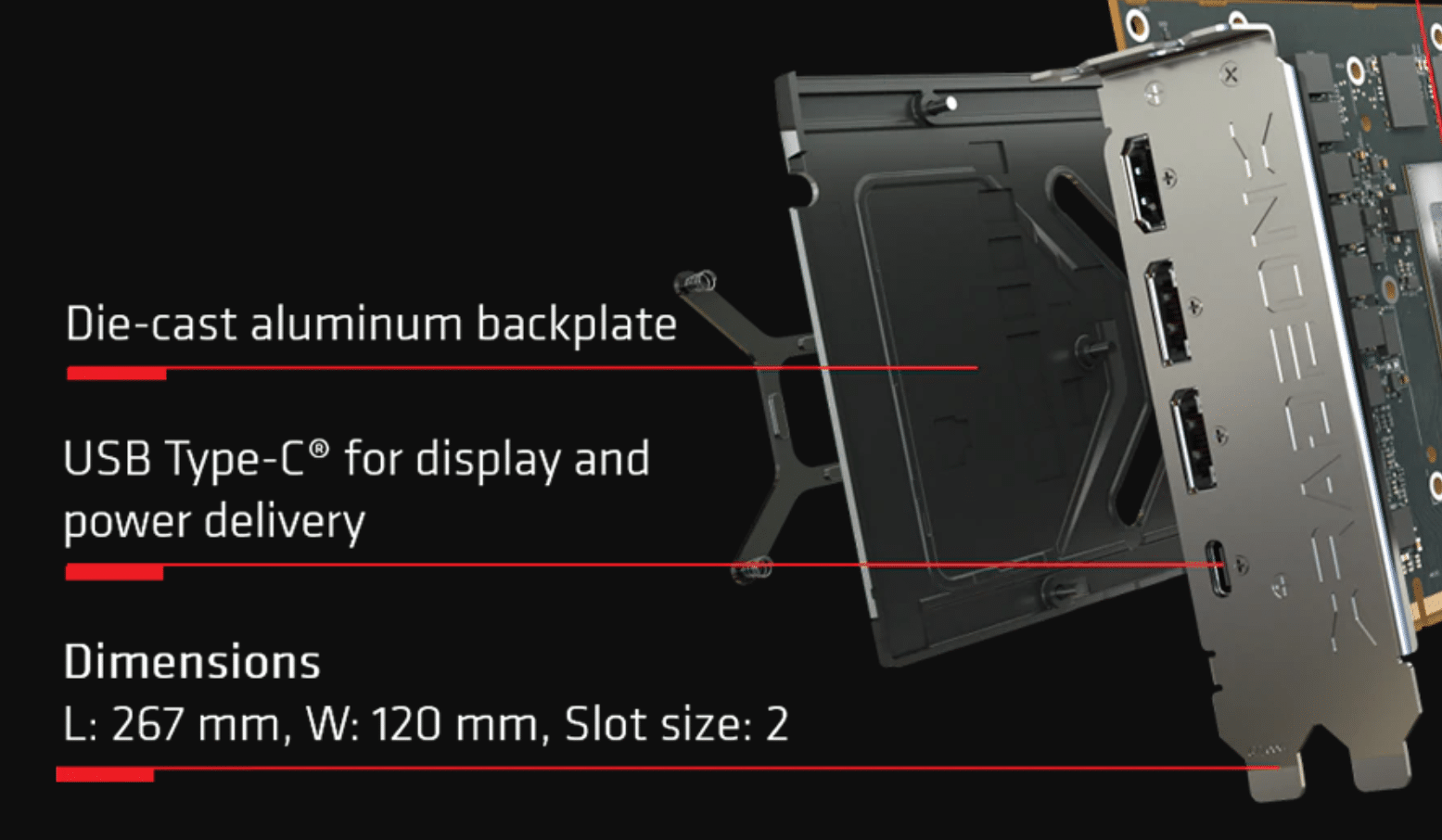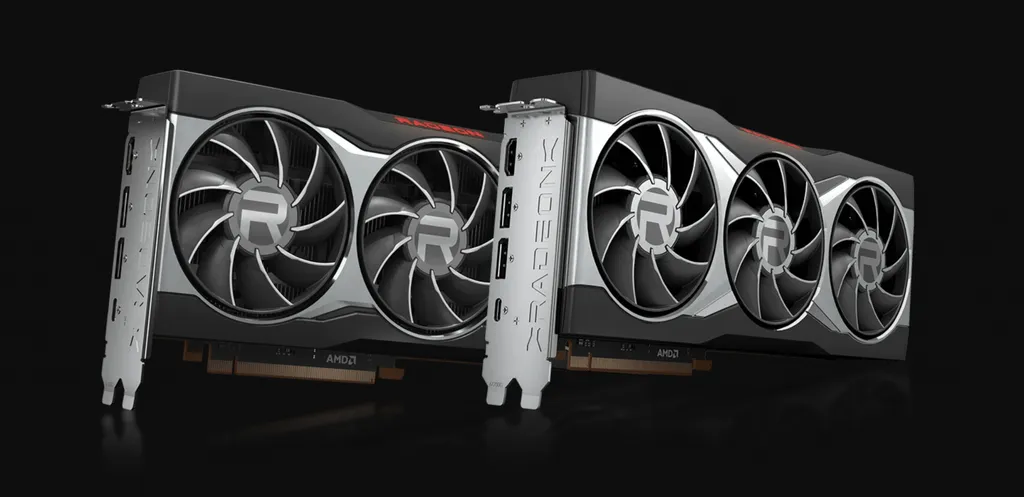AMD just announced three next generation Radeon graphics cards: RX 6800, RX 6800 XT, and RX 6900 XT. They compete directly with NVIDIA’s RTX 3000 series.
This RX 6000 series is built on the same RDNA 2 architecture used in the upcoming PlayStation 5, Xbox Series X, and Xbox Series S.

RDNA 2 builds on last year’s RDNA, using TSMC’s “enhanced” 7nm fabrication process to enable 30% higher clock frequencies.
It also introduces hardware accelerated ray tracing as well as ‘Infinity Cache’, a new 128MB ultra fast cache similar to the cache in CPUs.
The Cards
| Card | RDNA2 Compute Units | Boost Clock Speed | Price |
| RX 6800 | 60 | 2105MHz | $579 |
| RX 6800 XT | 72 | 2250 MHz | $649 |
| RX 6900 XT | 80 | 2250 MHz | $999 |
All three cards have 16GB of GBBR6 VRAM. Both AMD and NVIDIA usually distinguish models with VRAM, so this is an interesting strategy to take.
RX 6800 is positioned to compete with NVIDIA’s RTX 3070. AMD’s RRP is $80 higher, but the RTX 3070 has just half the VRAM. That should help the RX 6800 better support future ultra high resolution headsets.
RX 6800 XT is positioned to compete with RTX 3080. AMD is $50 cheaper here.
RX 6900 XT is the most powerful AMD card ever. It’s $500 cheaper than NVIDIA’s RTX 3090, and has 8GB less VRAM.
AMD’s Performance Claims
AMD is making big claims about RDNA2’s performance:

In this slide directly comparing RX 6800 XT to NVIDIA’s RTX 3080 at 1440p it’s shown as faster in Battlefield V, Borderlands 3, Call of Duty, Doom Eternal, Forza Horizon 4, Gears of War 5, Resident Evil 3, Shadow of the Tomb Raider, and Wolfenstein: Young Blood.
Interestingly, AMD included The Division 2 where the card falls behind slightly. Still, given it’s $50 cheaper this looks like AMD’s most competitive GPU launch in years.
We’ll keep a close eye for the first VR-specific benchmarks when these cards launch, as regular monitor performance doesn’t quite map directly to playing VR.
Oculus Link / Virtual Desktop Considerations
For normal PC gaming, choosing between NVIDIA and AMD is usually just a matter of comparing the raw performance and price. For native PC VR headsets that use DisplayPort or HDMI this is also mostly the case.
When using an Oculus Quest headset in PC mode, either officially through a USB cable or wirelessly via the app Virtual Desktop, your GPU doesn’t just send frames raw. Because WiFi and USB have considerably less bandwidth, the video stream is compressed using your graphics card’s built-in video encoder.
Virtual Desktop developer Guy Godin told us the video encoder in AMD’s current graphics cards has both higher latency and worse image quality than NVIDIA’s 2018 Turing (now replaced by Ampere). We’ve heard this from Oculus Link users too.
It’s currently unknown whether this is solved or improved in this new RX 6000 series, but if you’re planning on using one with Quest we’d recommend waiting for that to be tested before buying.

What will help your Oculus Link experience though is the inclusion of a USB Type-C port and USB controller in all three announced cards. NVIDIA had this for some higher end RTX 20-series cards but dropped the feature in the new 30-series.
That means if you want full visual quality via USB 3.0, you can plug your Quest directly into the graphics card without having to worry if your motherboard’s USB controllers are overloaded by other devices.






























